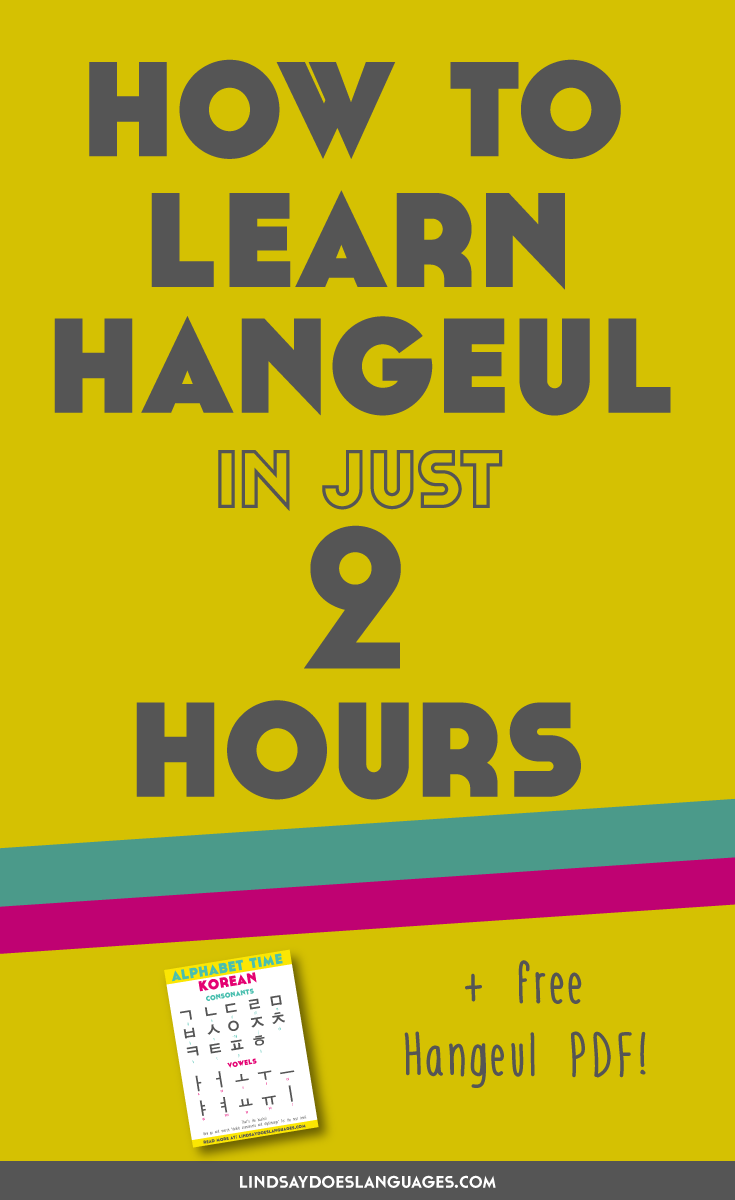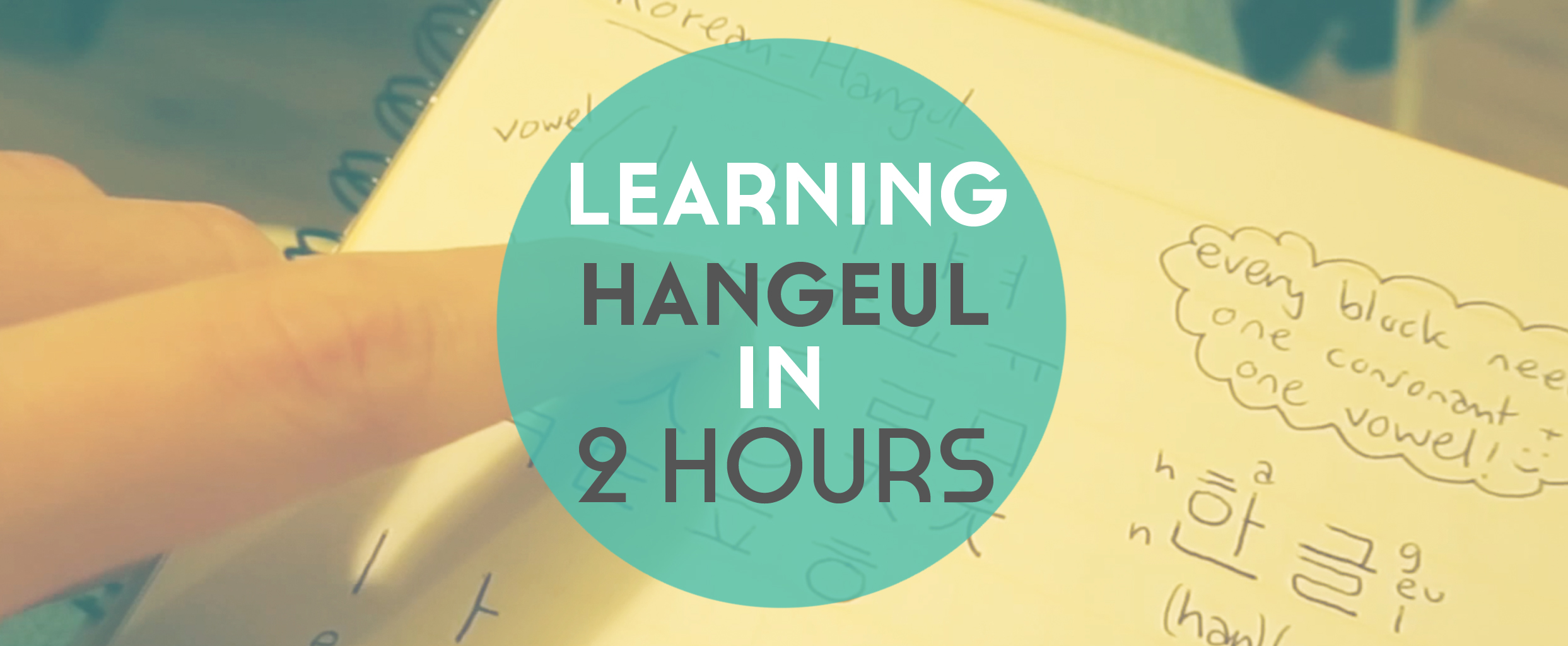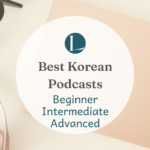October 9th, 2015
How I Taught Myself Hangeul in Under 2 Hours
For the first week of October, I decided to learn Korean as part of the Language Script Challenge AND to document the process a bit because today is Hangeul Day in South Korea!
It’s only been a week and I’m by no means a pro (at least not yet!) but today I want to share with you how I taught myself the Korean alphabet in a week and hopefully inspire you to also give a language with a different script a go.
I’ve even created a PDF guide to the basic alphabet for you to get started with Hangeul. Yay!

First things first, I have to say that this wasn’t my first exposure to Korean. About 2 years ago now, I spent a weekend learning the Russian alphabet on Memrise (bear with me here, I promise this is relevant) and was amazed by how easily I picked up a brand new way of reading in just a weekend.
I decided that to keep this language curiosity satisfied, I’d aim to learn a different alphabet the following weekend too – that alphabet was Korean. With no input other than a Memrise course, it didn’t make as much sense to me as the Russian alphabet had. However, I’d dipped my toes in the Korean water and was happy with that for the time being.
That said, I always found Korean an interesting language, especially since starting Japanese last year. Asia calling, I guess. So I was really looking forward to this week!
I’m going to share with you my diary detailing exactly what I did each day, the resource list of what I used, what I’d do differently, and a vlog documenting the process.
My Hangeul Diary
Day 1 – 30 minutes
On my first day, I started by watching the first video in the ‘Learn to Read and Write Korean’ series from Korean Class 101. It was great because it taught me that all vowels need a consonant and to write ‘ㅇ’ next to it if there’s no consonant sound. However, I found it a little too slow for me.
I needed to move on faster so I headed on to Memrise to water the course I did years ago that I mentioned in the intro. At first it felt impossible, but things came back to me pretty quickly.
The difference between two years ago and now is that I now know how I can put these letters together – at least I know how to do it with a vowel word or syllable that has no consonant sound.
I finished the first day’s session by writing the alphabet out from Omniglot in my notebook.
Day 2 – 30 minutes
I recorded what I’d remembered from day one (you can see in the video!) and searched for a different video series to teach me how to pronounce all the letters a little quicker than the other series. I found a video by Sweet and Tasty TV, which is definitely a must if you’re interested in Korean and the country and culture.
I then reviewed the letters I’d stuggled with the previous day on Memrise. Good ol’ Memrise.
Day 3 – 20 minutes
Feeling relatively confident with the pronunciation and reasonably so with the letters, I wanted to check out the apps I’d downloaded and see if they had anything about how to form the letters into syllable blocks.
Hangeul 101 proved pretty useful for this. There’s a section on there that shows all the possible combinations of letters and where to put consonants and vowels. If I was to take Korean further at some point, this would be much more important to go into in depth then it is at this stage.
Day 4 – 30 minutes
I Memrised, I wrote the letters out again with the sounds underneath them, I watched another great video about the alphabet – this time by Talk to Me in Korean.
I also went to see Uruguay vs Fiji in the Rugby World Cup tonight, which meant my Korean time the following morning was spent sleeping!
Day 5 – 0 minutes
Asleep. Yawn.
What did I use?
If you’re intrigued, here’s the list of everything I used this week and a few extras I’d love to use if/when I learn a little more Korean.
YouTube Channels
Sweet and Tasty TV
Korean Class 101
Talk to Me in Korean
Apps
Hangeul 101 (Apple | Google)
Korean 123 (Apple | Google)
PlayKorean (Apple)
Websites
Omniglot
Memrise – Korean Alphabet
Super Basic Stuff That’s Always Forgotten About
A notebook!
Other Things I’ve Found I’d Want To Use To Take It Further
Sydney to Seoul
Korean Notebook
Hangukdrama
Viki (not just awesome for Korean!)
What didn’t work
Overall, I was pretty pleased with the process. After all, I’ve spent a lot of time studying other language scripts this year!
However, if I was to do something different next time, I’d love to give the first day a bit longer to allow me to learn how to pronounce all of the letters. Then I’d devote more time later on in the week to learning how the letters go together to form syllable blocks.
What do I recommend?
As you can see from my daily diary, I spent under 2 hours learning Hangeul. For most of the scripts and writing systems in this challenge, that would barely be enough time to scratch the surface. However for Hangeul, I feel like I’ve dug a little deeper and definitely feel confident that I could learn more Korean using my basic knowledge of the script as a foundation.
What would I recommend? If you’re looking for a fun challenge when you’ve got a bit of free time, give Hangeul a go. It’s something that can be picked up pretty quickly, it’s really interesting, and it’s a different alphabet. I can’t think of a better way to spend two hours!
However, if you’re looking to learn more Korean, I’d definitely recommend using the resources listed above for a more comprehensive view of the language as a whole.
And if you’re a visual learner and love to see how things are done, check out my vlog that I’ve filmed throughout this week learning Hangeul.







